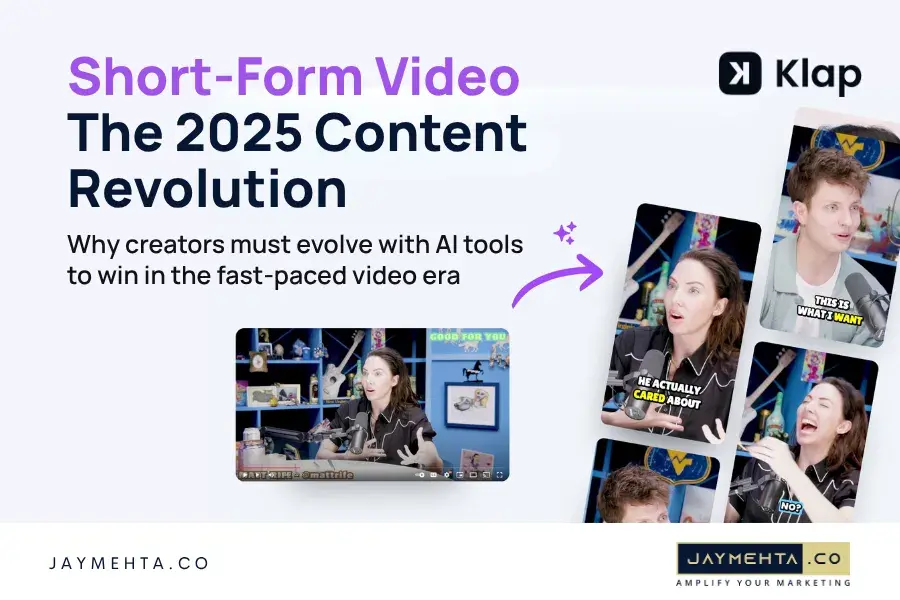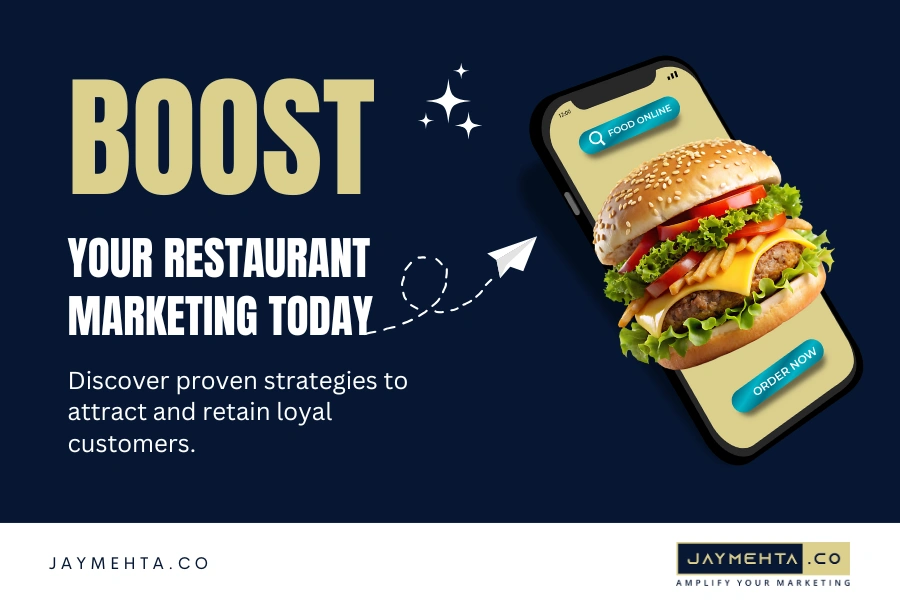As we transition into 2025, the dynamics of social media continue to shift at an unprecedented pace. With new platforms emerging, algorithms changing, and user preferences evolving, businesses must craft a comprehensive and adaptable social media strategy. This blog will provide actionable tips and best practices to help you build a robust social media strategy tailored to the trends and challenges of 2025.
Understanding the Importance of a Social Media Strategy
A well-defined social media strategy is essential for businesses aiming to enhance brand awareness, foster customer engagement, and drive sales. In 2025, the focus will shift towards creating authentic connections with audiences rather than merely broadcasting messages. This requires a comprehensive approach that incorporates various elements, including content creation, engagement strategies, and analytics.
Key Components of a Successful Social Media Strategy
-
Set Clear Goals and Objectives

The foundation of any successful social media strategy lies in setting clear goals and objectives.
-
Define Your Purpose: What do you want to achieve? Common goals include increasing brand awareness, driving website traffic, generating leads, improving customer engagement, or enhancing customer service.
-
SMART Goals: Ensure that your goals are SMART: Specific, Measurable, Achievable, Relevant, and Time-bound. For example, instead of saying “increase followers,” aim for “gain 1,000 new followers on Instagram within three months.”
-
-
Know Your Audience
Understanding your audience is crucial for crafting relevant content that resonates with them.
-
Conduct Audience Research: Use surveys, interviews, and social media analytics to gather insights about your target audience’s demographics, interests, and behaviors.
-
Create Buyer Personas: Develop detailed buyer personas that represent your ideal customers. This helps in tailoring your messaging and content to meet their needs effectively.
-
-
Create a Content Calendar
A content calendar is an invaluable tool for planning your social media posts in advance.
-
Plan Ahead: A well-structured content calendar allows you to maintain consistency in posting while ensuring you cover all relevant topics.
-
Diverse Content Types: Include a mix of content types such as images, videos, stories, infographics, and live sessions to keep your audience engaged.
-
Seasonal Campaigns: Incorporate seasonal themes or events into your calendar to leverage trending topics and increase relevance.
-
-
Leverage Video Marketing
Video content continues to dominate social media engagement.
-
Short-Form Videos: Prioritize short-form videos that capture attention quickly. Platforms like TikTok and Instagram Reels are perfect for this format.
-
Live Streaming: Use live streaming to connect with your audience in real-time. This fosters authenticity and allows for direct interaction.
-
Tutorials and Demos: Create informative video tutorials or product demonstrations that showcase your offerings while providing value to viewers.
-
-
Incorporate Influencer Marketing

Influencer marketing remains a powerful strategy for reaching new audiences.
-
Choose the Right Influencers: Collaborate with influencers who align with your brand values and have an engaged following.
-
Micro-Influencers: Focus on micro-influencers as they often have higher engagement rates and more authentic connections with their followers.
-
Long-Term Partnerships: Establish long-term relationships with influencers rather than one-off promotions to build trust with their audience.
-
-
Utilize User-Generated Content (UGC)

User-generated content is an effective way to enhance engagement while building community.
-
Encourage UGC: Create campaigns that incentivize users to share their experiences with your products or services. This could include contests or giveaways.
-
Showcase UGC: Feature user-generated content on your social media channels to highlight customer satisfaction and build trust among potential customers.
-
-
Analyze Your Performance
Regularly monitoring your social media performance is crucial for refining your strategy.
-
Use Analytics Tools: Utilize tools like Google Analytics, Hootsuite Insights, or Sprout Social to track key metrics such as engagement rates, reach, impressions, and conversion rates.
-
Data-Driven Decisions: Use these insights to make data-driven decisions about content types, posting times, and audience targeting.
-
Engagement Strategies for Social Media
Effective engagement is vital for building a loyal community around your brand. Here are some strategies to enhance engagement:
- h3>Interactive Content
Interactive content encourages participation from your audience.
-
Polls and Quizzes: Utilize polls or quizzes on platforms like Instagram Stories or Twitter to engage users actively.
-
Q&A Sessions: Host live Q&A sessions where followers can ask questions directly related to your products or industry.
-
-
Storytelling
Storytelling helps create emotional connections with your audience.
-
Brand Stories: Share authentic stories about your brand’s journey, values, and mission. Highlight challenges overcome or milestones achieved.
-
Customer Testimonials: Showcase customer success stories that illustrate how your products have made a difference in their lives.
-
-
Best Times to Post
Timing can significantly impact the visibility of your posts.
-
Research Posting Times: Analyze when your audience is most active on each platform using analytics tools.
-
Experimentation: Test different posting times to determine what works best for maximizing engagement
Related Blog: Best Times to Post on Social Media: 2025 Complete Guide
-
-
Community Building
Fostering a sense of community can lead to increased loyalty among followers.
-
Create Dedicated Spaces: Consider establishing Facebook Groups or LinkedIn Communities where followers can connect over shared interests related to your brand.
-
Host Events: Organize online events or webinars that allow direct interaction with your audience while providing valuable insights or knowledge.
-
Embracing Trends in 2025
To stay ahead in the competitive social media landscape of 2025, consider incorporating the following trends into your strategy:
-
AI and Automation
Artificial intelligence (AI) is transforming how businesses approach social media marketing.
-
Content Creation Tools: Leverage AI tools like ChatGPT for generating content ideas or drafting posts quickly.
-
Chatbots for Customer Service: Implement chatbots on platforms like Facebook Messenger to handle customer inquiries promptly.
-
-
Social Commerce
The integration of e-commerce features within social media platforms is on the rise.
-
Shopping Features: Utilize shopping features available on platforms like Instagram Shopping or Facebook Shops to facilitate seamless purchasing experiences directly from posts.
-
Shoppable Posts: Create shoppable posts that allow users to click through directly from images or videos to purchase products easily.
-
-
Sustainability Focus
Consumers are increasingly prioritizing sustainability in their purchasing decisions.
-
Showcase Sustainable Practices: Highlight your brand’s commitment to sustainability by showcasing eco-friendly practices in production or packaging.
-
Engage in Conversations About Sustainability: Participate in discussions around sustainability trends relevant to your industry through thoughtful content sharing.
-
-
Content Experimentation
Be open to experimenting with different content formats and styles as social media evolves.
-
New Platforms: Stay informed about emerging platforms that may appeal to your target audience—consider testing out new channels as they gain popularity.
-
Content Variety: Experiment with formats such as podcasts or interactive stories that encourage user participation.
-
Best Practices for Social Media Marketing in 2025
Implementing best practices can significantly enhance the effectiveness of your social media efforts:
-
Consistency is Key
Maintaining consistency across all platforms builds familiarity with your brand.
-
Regular Posting Schedule: Establish a regular posting schedule based on when your audience is most active.
-
Brand Voice Consistency: Develop a recognizable brand voice that resonates across all platforms while adapting slightly based on platform characteristics (e.g., professional tone on LinkedIn vs. casual tone on Instagram).
Read also: LinkedIn vs Instagram: Choose the Best for Business Platform
-
-
Tailor Content for Each Platform
Each social media platform has its unique characteristics; tailoring content accordingly enhances effectiveness.
-
Platform-Specific Strategies: Understand the nuances of each platform—what works on Instagram may not work on Twitter—and adjust accordingly.
-
-
Engage with Analytics Tools
Utilizing analytics tools effectively can provide valuable insights into performance metrics:
-
Track Performance Regularly: Regularly review analytics data to identify trends in audience behavior and adjust strategies accordingly.
-
-
Foster Long-Term Relationships
Building long-term relationships with influencers can yield better results than one-off promotions:
-
Ambassador Programs: Consider establishing ambassador programs where influencers regularly promote your products throughout the year rather than just during campaigns.
-
Conclusion
Crafting an effective social media strategy for 2025 involves understanding emerging trends, engaging authentically with audiences, and leveraging data-driven insights for continuous improvement. By implementing these tips now—such as setting clear goals and understanding audiences deeply—businesses can build a robust presence on social media that drives engagement and fosters lasting relationships with customers.
At Jay Mehta Digital, we are committed to helping brands navigate this dynamic landscape effectively by providing tailored strategies designed for success in the evolving world of social media marketing.
FAQs About Building a Successful Social Media Strategy
What are some common mistakes businesses make when developing their social media strategy?
Common mistakes include:
- Not defining clear goals or objectives.
- Failing to understand their target audience.
- Inconsistent posting schedules leading to decreased engagement.
- Ignoring analytics data which could provide valuable insights into performance.
- Overlooking the importance of authentic interactions with followers.
How often should I post on my business's social media accounts?
The frequency of posting depends on the platform:
- For Facebook and LinkedIn, aim for about 1–2 posts per day.
- On Instagram, consider posting daily or several times a week depending on content availability.
For Twitter, multiple tweets throughout the day can be effective due to its fast-paced nature.
Experimentation will help determine what works best for your audience!
How do I measure the success of my social media strategy?
Success can be measured through various metrics:
- Engagement rates (likes, shares, comments).
- Follower growth over time.
- Website traffic driven from social channels using Google Analytics.
- Conversion rates from leads generated via social media campaigns.
- Brand sentiment analysis through customer feedback and reviews.
What are some effective ways to increase engagement on my posts?
To boost engagement:
- Use interactive elements like polls or quizzes.
- Share user-generated content (UGC) featuring customers using your products.
- Post visually appealing images or videos that tell a story about your brand.
- Respond promptly to comments and messages from followers—showing you value their input fosters loyalty!
- Collaborate with influencers who resonate well with both their audiences and yours!
How important is it to stay updated with social media trends?
Staying updated with trends is crucial because:
- It allows you to adapt quickly based on changing algorithms or user preferences—ensuring relevance!
- Helps identify new opportunities for content creation (like emerging platforms).
- Enables you to leverage popular formats (e.g., short videos) effectively before they become saturated markets!











